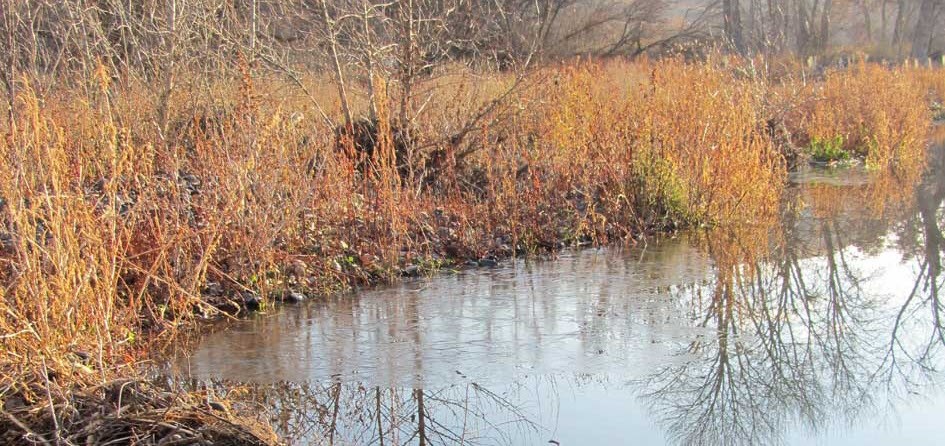
NPS Photo
Importance and Issues
Riparian vegetation communities support unique plant and animal species and provide important ecological functions. Throughout network parks these communities have been substantially altered by historic land use, invasive/exotic plants, development, and other impacts. In many areas, wholesale shifts in riparian plant communities have taken place and they are now largely dominated by invasive exotic species.
Abundance and composition of riparian vegetation species and communities are fundamental and easily measurable attributes. They also address objectives related to the invasive/exotic plants monitoring we do.
Because of the three-dimensional nature of riparian ecosystems and the inextricable relationship between riparian vegetation and stream channel morphology, field efforts are coordinated closely with the network's stream channel characteristics monitoring.
Monitoring Objectives
- Determine the status of riparian condition, as measured by greenline and channel cross-section wetland ratings (i.e., obligate wetland riparian plant species cover), effective ground cover, and greenline woody vegetation cover for selected wadeable stream reaches.
- Determine the direction and magnitude of change over time for obligate wetland riparian plant species cover, effective ground cover, and woody vegetation cover, and establish whether those changes reflect impacts from management or land use activities.
- Determine the condition of riparian zones along selected wadeable UCBN stream reaches.
- Determine the status and trend in the cover of non-native invasive plant species (e.g., Acroptilon repens) found along UCBN streams.
- Determine if changes in stream channels, specifically bank erosion, are likely to negatively impact cultural resources within the floodplain at Big Hole National Battlefield.
Source: NPS DataStore Saved Search 725. To search for additional information, visit the NPS DataStore.
Source: NPS DataStore Saved Search 720. To search for additional information, visit the NPS DataStore.
Source: NPS DataStore Saved Search 885. To search for additional information, visit the NPS DataStore.
Last updated: August 29, 2018
